
Non-US Militaria of World War I

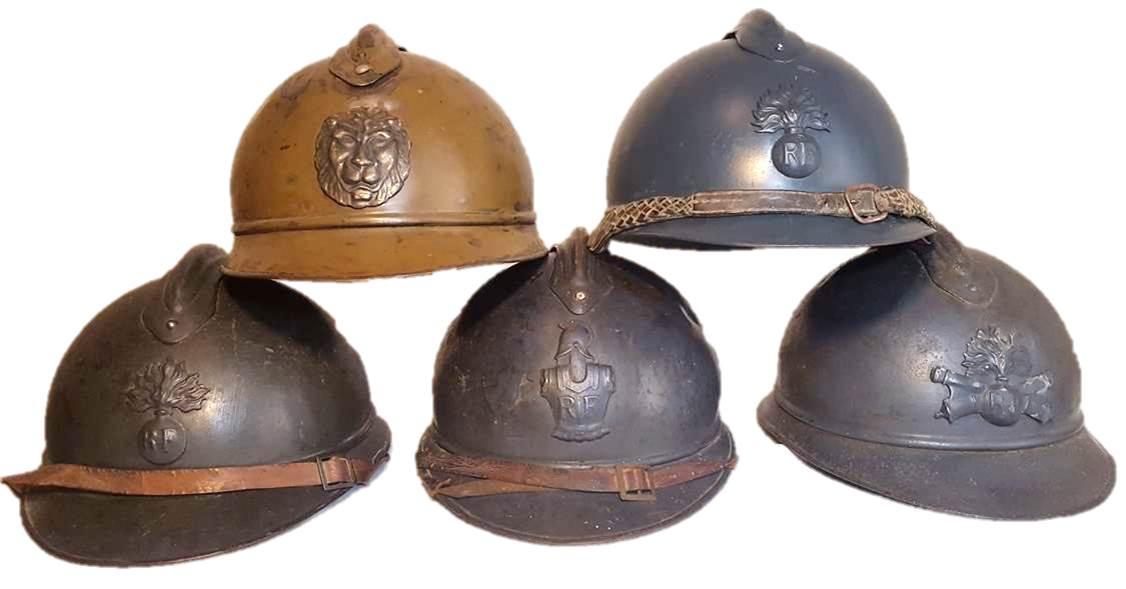
M1915 "Adrian" helmets. France was among the first nations in WWI to field a helmet to its troops for protection. This offered good coverage of the head and neck, but the steel was thin and provided poor overall protection. The French had different insignia on the helmet to denote branch of service. Top row: Belgian-issue helmet with lion crest, and French infantry officer's helmet with braided chinstrap. Bottom row: infantry helmet, engineers model, and artillery. The artillery helmet was found at Pont-à-Mousson, France.
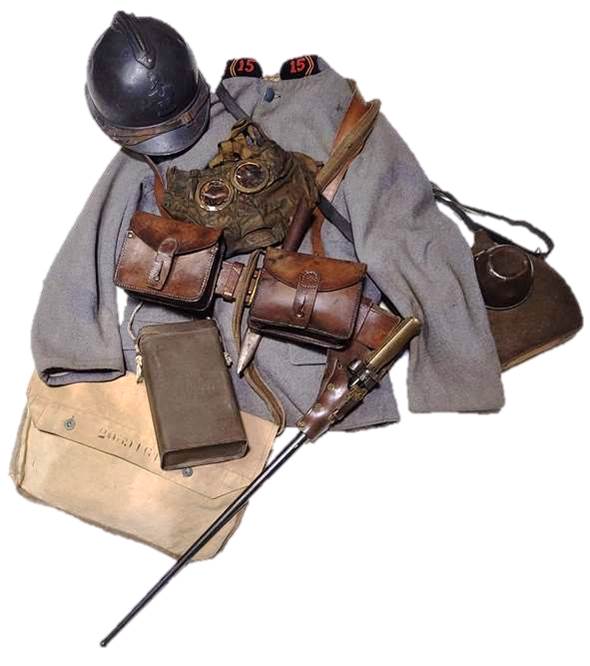
Assembly of equipment as worn by a French soldier in WWI. Engineer uniform, bread bag, M2 gas mask and tin, Lebel bayonet, trench knife, and canteen round out the display.
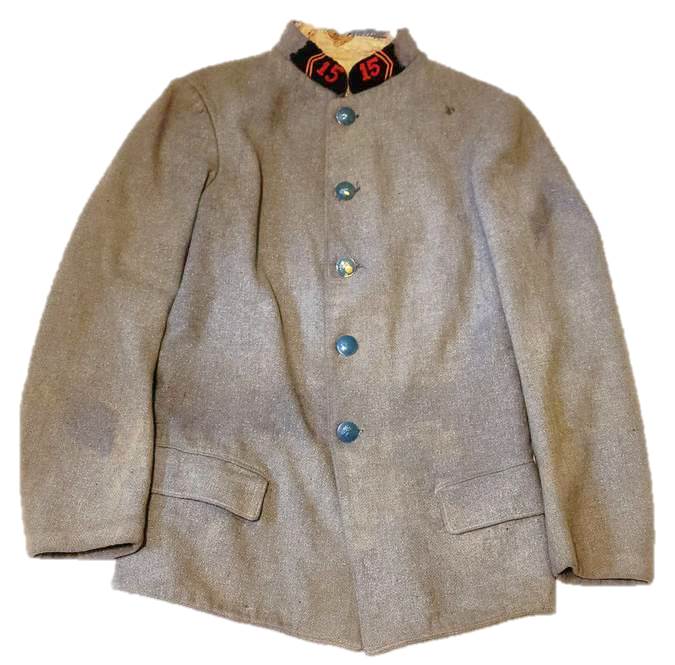
M1914 tunic worn by an Engineer. Faint outlines show where sleeve rank and service stripes were once attached.
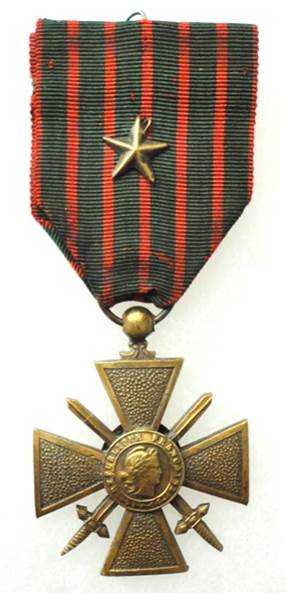
The French "Croix de Guerre" (Cross of War) for bravery, issued in 1918. The bronze star on the ribbon indicates that this recipient was mentioned by name in regimental or brigade dispatches for heroism.
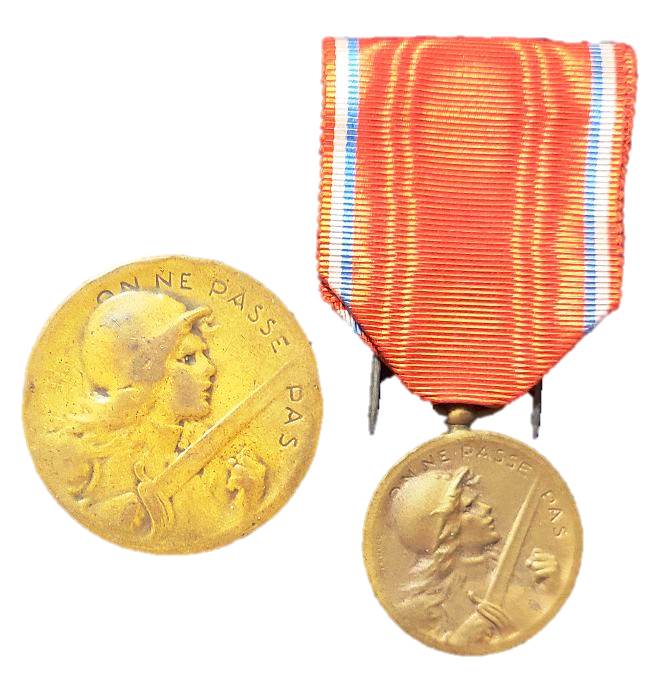
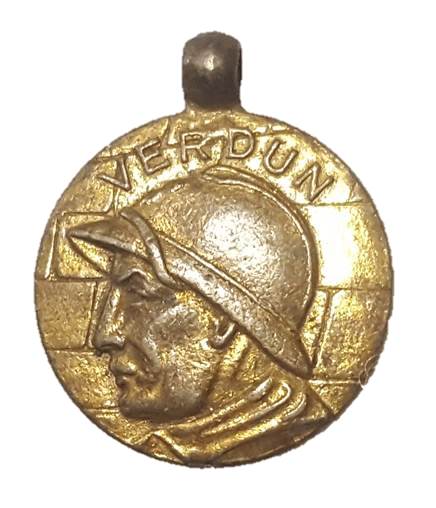
The Verdun Medal, as issued to French soldiers and its allies who fought in the vicinity of Verdun during the war. Verdun was the longest battle of World War I, lasting from February to December 1916 and resulting in over one million casualties. There are several different variations of this medal.
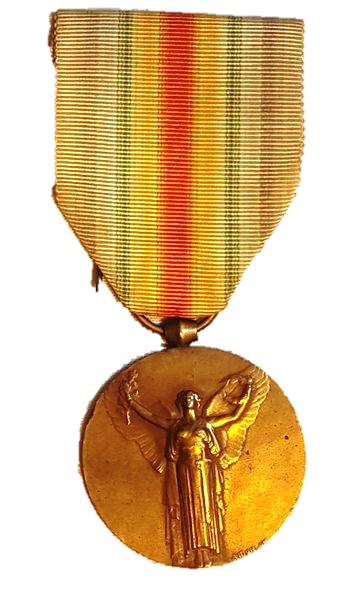
An example of the French WWI Victory Medal. The ribbon has faded.
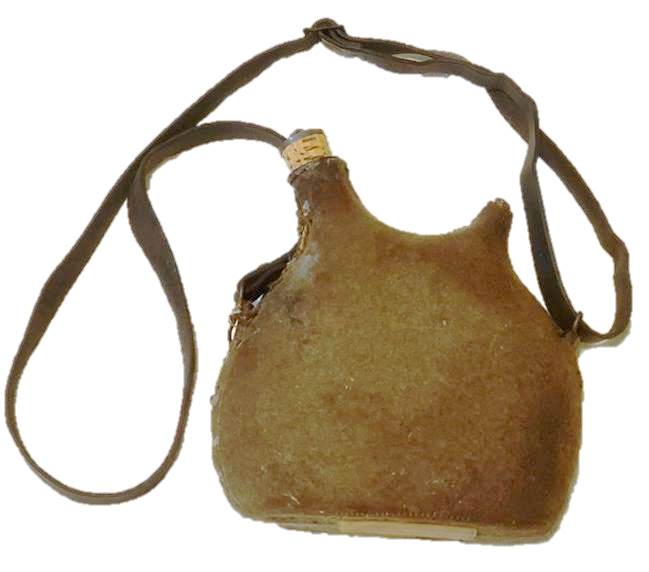
M1887 2-litre canteen with strap. The brown cover is often associated with colonial troops.
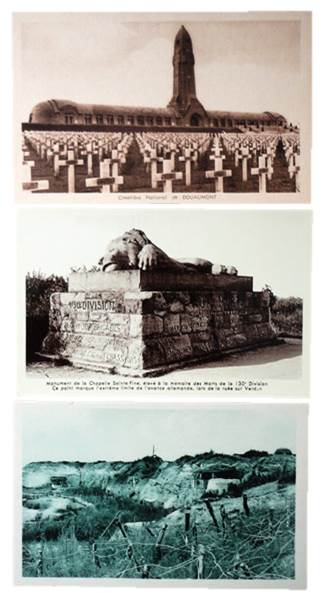
French postcards from the early 1920s commemorating the battle of Verdun.
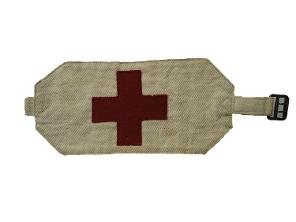
A medic's armband, bearing the Geneva Cross.

Relic liter and half-liter canteens as issued to French soldiers. These were recovered from a barn in Brittany and would have carried water and wine.

Standard issue cup of the French soldier. These were often suspended from a canteen.
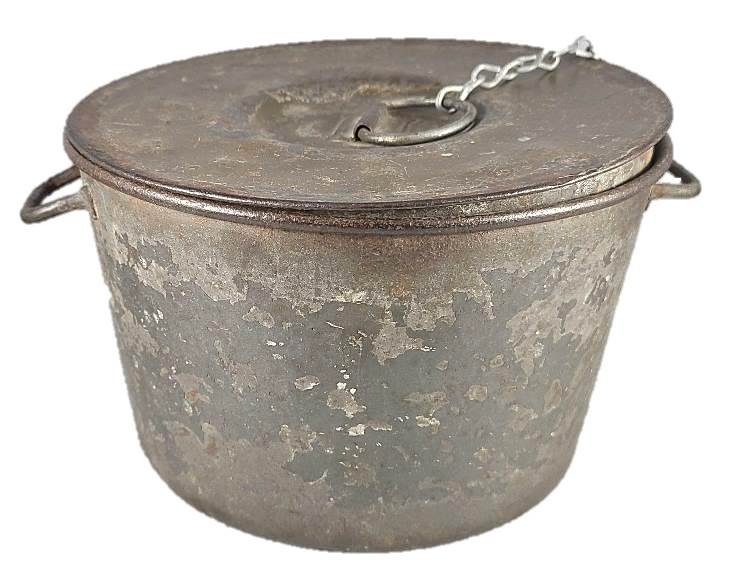
WWI era French mess kit.

Lebel bayonets, M1886. The top example is the original configuration, while the bottom version represents a change during WWI: the hooked guard was removed due to catching on wire, and the steel used in the handle was replaced with brass.
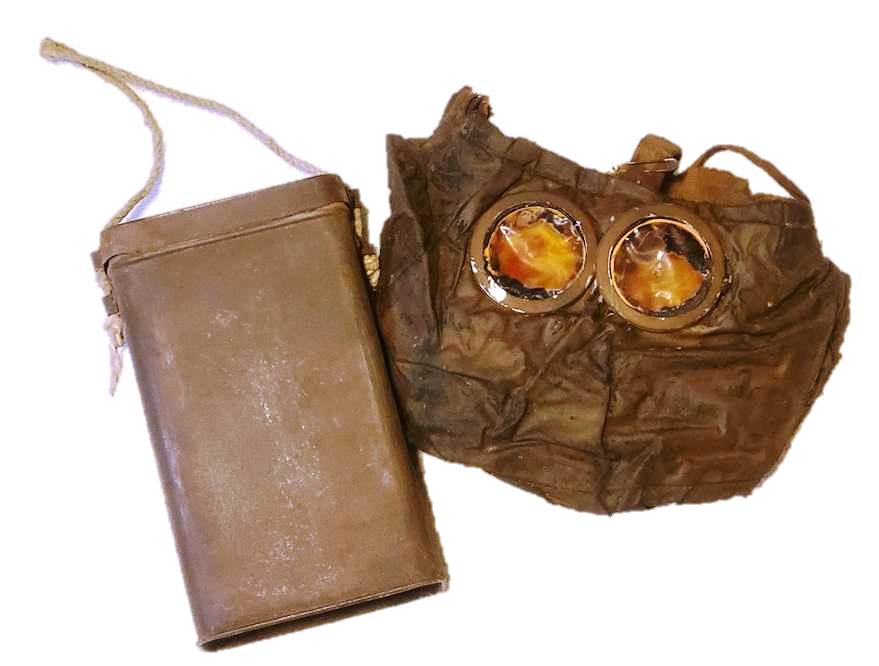
M2 gas mask and tin carrier. This mask was issued to a US Air Service veteran from Ohio who served in France for two years; large quantities of French-made gas masks were issued to allies. The padded design offered greater comfort than the box respirators of the British and US militaries.
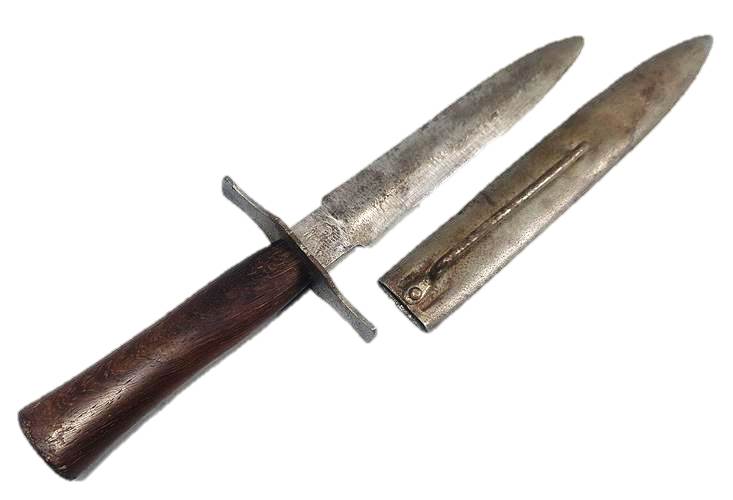
M1916 "Avenger" trench knife

Trench art souvenir from Verdun in 1918. It is made from brass and a spent bullet with the French Croix de Guerre symbol on it. It was likely brought home by an American veteran.
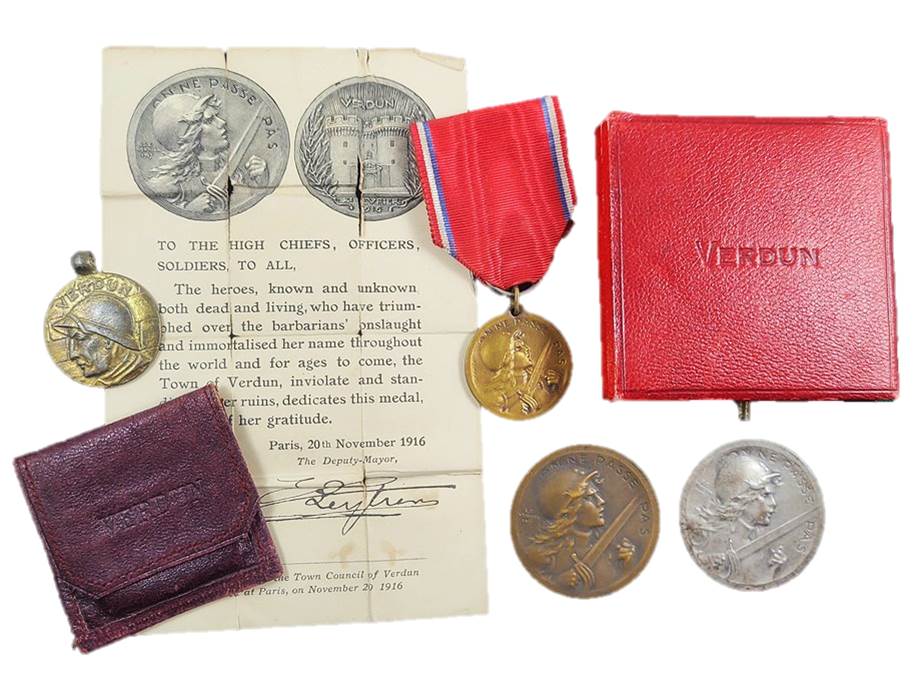
Various versions of the Verdun Medal, which was awarded to French and US veterans who served at or near Verdun.
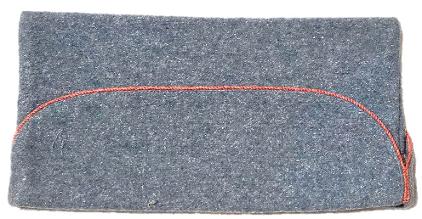
French artillery garrison cap


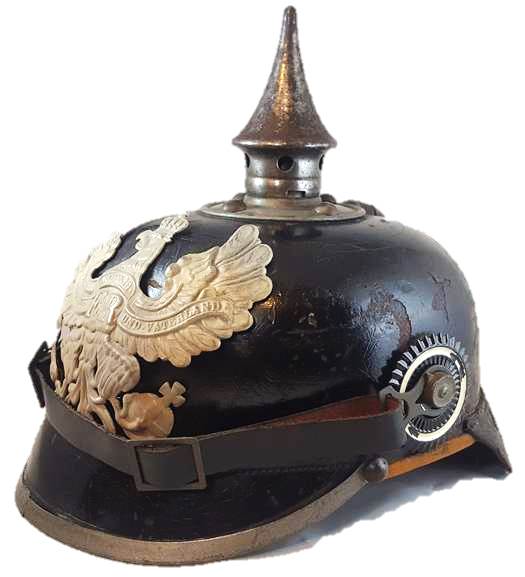
Leather "pickelhaube" helmet of the Germany army. This example is dated 1916 and has a removable spike.
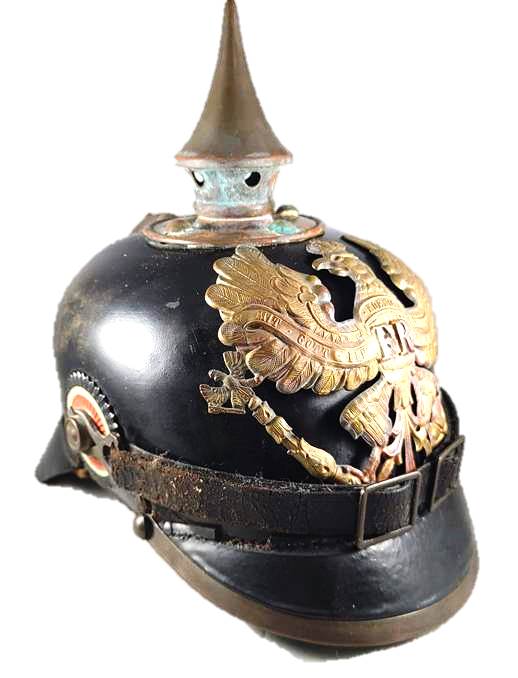
Leather Prussian pickelhaube with early war brass fittings.
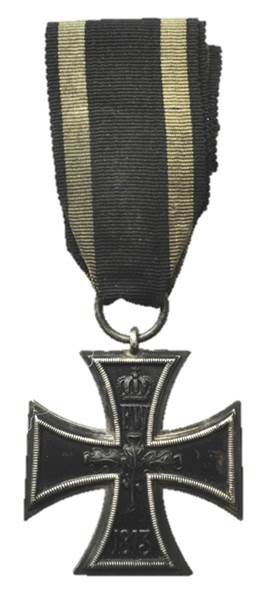
Iron Cross medal, 2nd class. These were awarded for bravery.
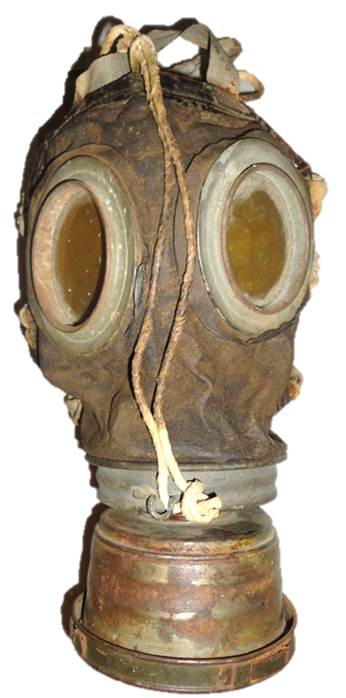
German gas mask. The body is made of oiled leather and fitted with a removable filter.
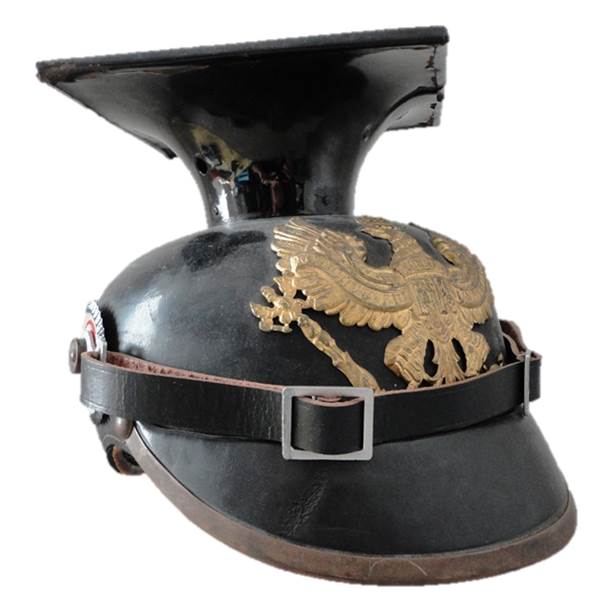
Leather helmet for "Uhlan" cavalry units in the German army.

M17 steel helmet used by German troops in the late war years. The shape gave better neck and face protection than any other helmet at the time, and the lugs on the side allowed for an armored brow plate to be attached. This example was painted in a camouflage pattern for better concealment.
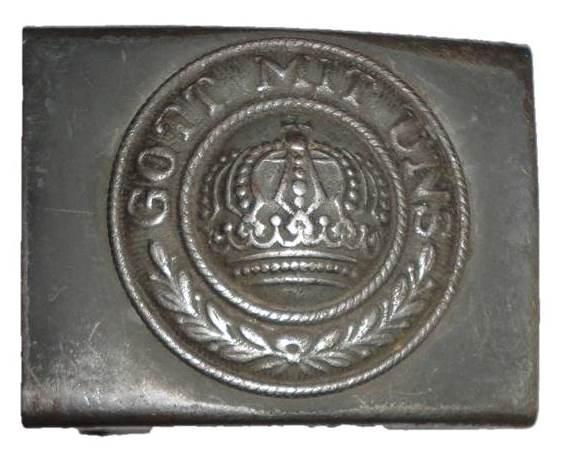
Enlisted man's belt buckle. Its emblem reads "God is with us."
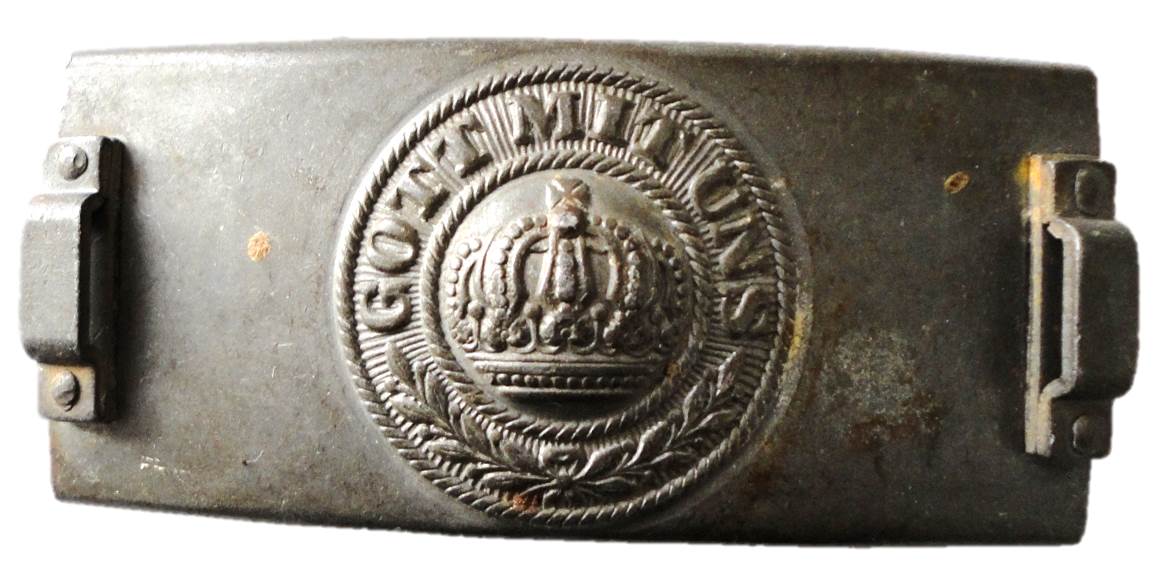
German belt buckle specially made for telegraph troops. The brackets were designed to support a reel of telegraph wire and free up the soldier's hands.
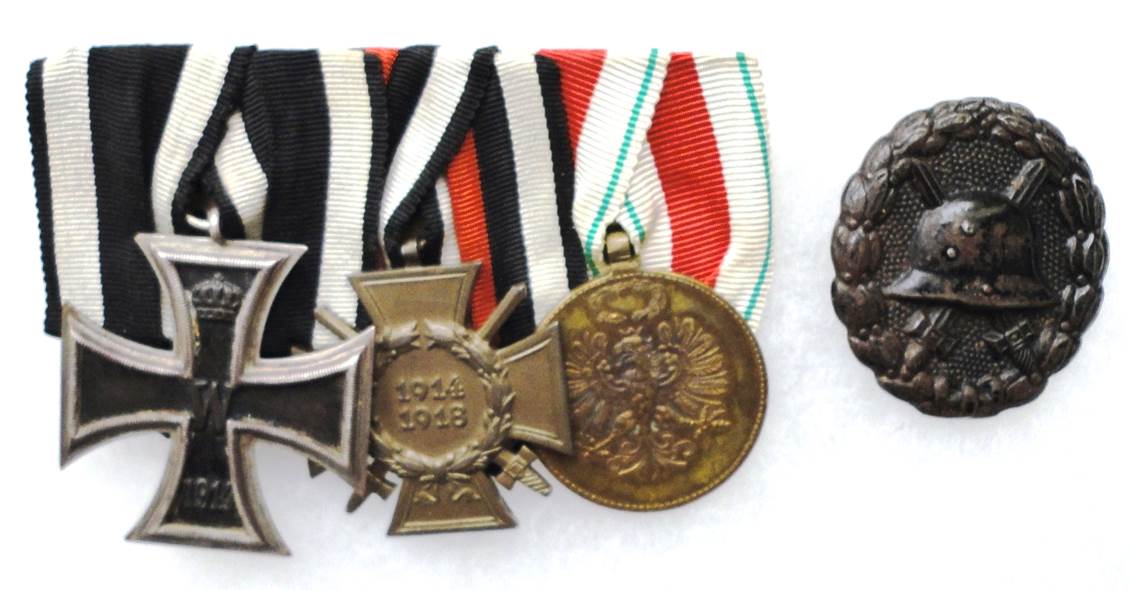
Mounted medal group. This veteran was awarded the Iron Cross, Hindenburg Cross, and a campaign medal for service in the Italian region of Tyrol. The badge at right is the Black Wound Badge, indicating that he was wounded in combat.
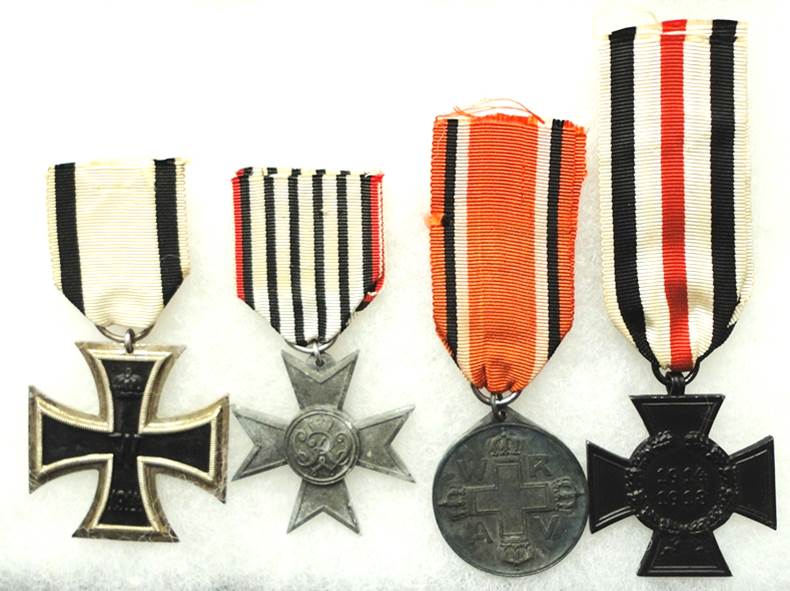
Medal group to a female nurse who served in WWI. The Iron Cross has a colors-reversed ribbon to indicate bravery as a non-combatant; there are War Service and Red Cross medals, and the medal at far right is a "next-of-kin" Hindenburg Cross given to relatives of fallen soldiers.

German "Butcher" bayonet, named for its shape that resembled a butcher knife. This was the standard mid-war bayonet for the German Army.

German 1884/98 bayonet, complete with scabbard and frog dated 1917.
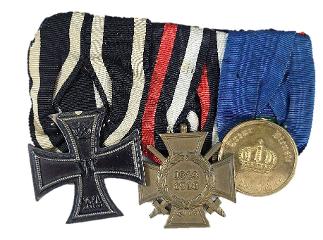
Prussian medal bar with the Iron Cross 2nd Class, Hindenburg Cross, and 12-year Prussian service medal

German shoulder board
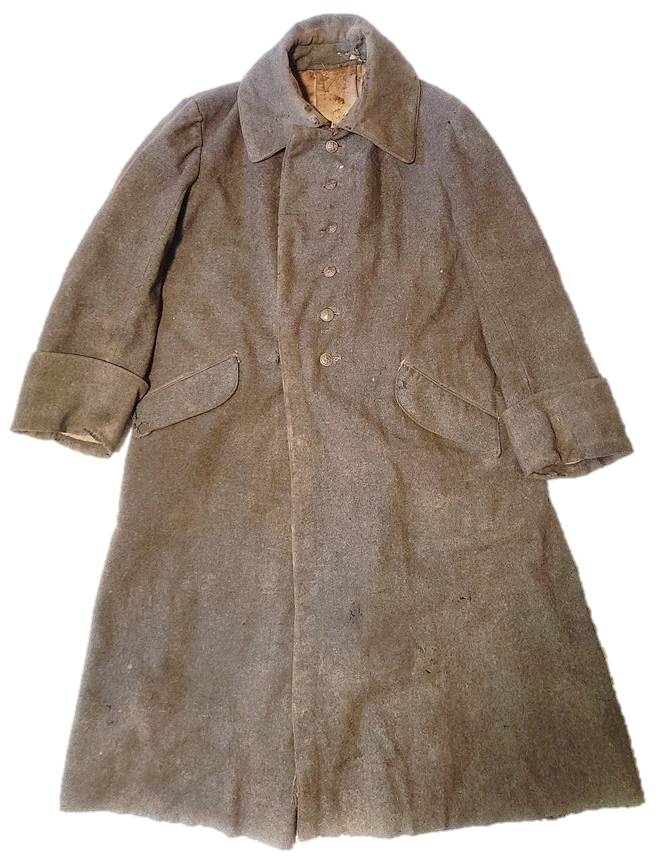
German trench coat, worn by Bavarian troops.
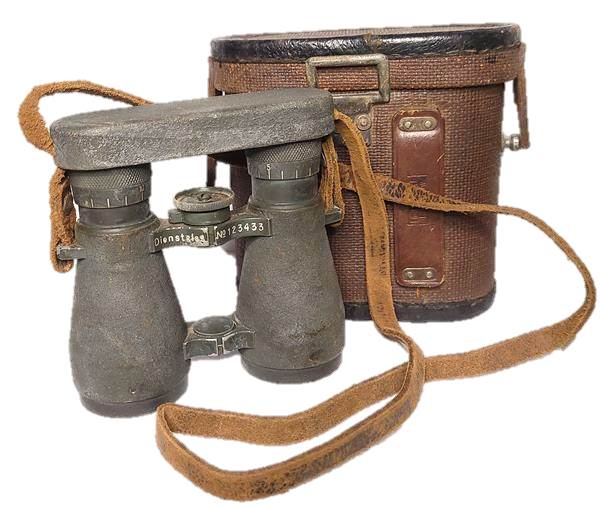
1908 model field glasses, complete with case

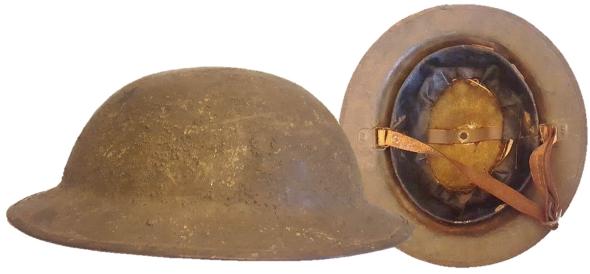
The need for helmets quickly became apparent in WWI and each country developed their own models to lend protection to its soldiers. The British Mark I helmet, above, was first patented in 1915 and saw widespread use beginning in 1916. It has a rubber ring in the crown for comfort and a rough textured finish for camouflage. The United States would copy this design with their M1917 helmet, with major differences being the gauge of the steel, different rivet pins, and the omission of the rubber ring.

Early war uniform of a British Regimental Quartermaster Sergeant of the London Territorial Royal Field Artillery. It is complete with RFA cap and bandoleer.
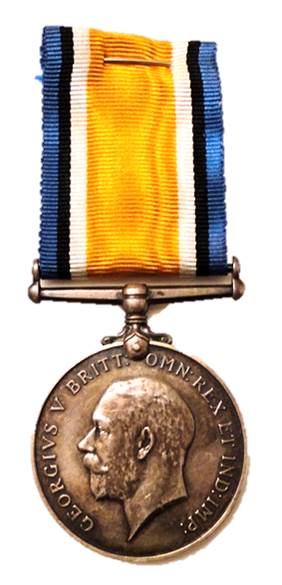
World War I medal issued for an Irish soldier who was one of the war's early casualties. He enlisted in Cork, Ireland, at the start of WWI and served as a Private in the 2nd Battalion, Royal Munster Fusiliers. He was killed on 21 December 1914 and is buried in Pas de Calais, France.
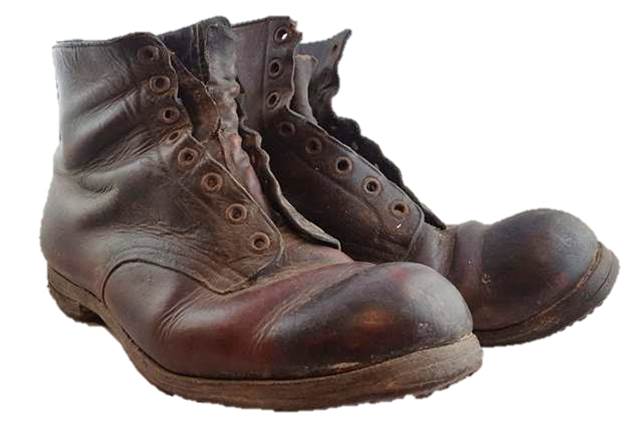
These are believed to be Commonwealth trench boots, likely private-purchase. They were located in France and retain hobnail soles and evidence of boot black that would have been British regulation in WWI.
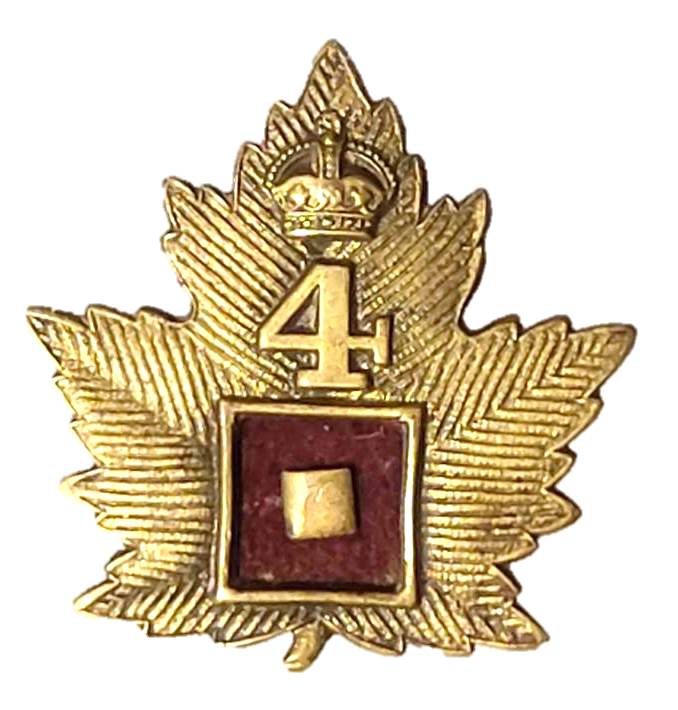
Badge for the 4th Battalion Railway Troops of the Canadian Expeditionary Forces.
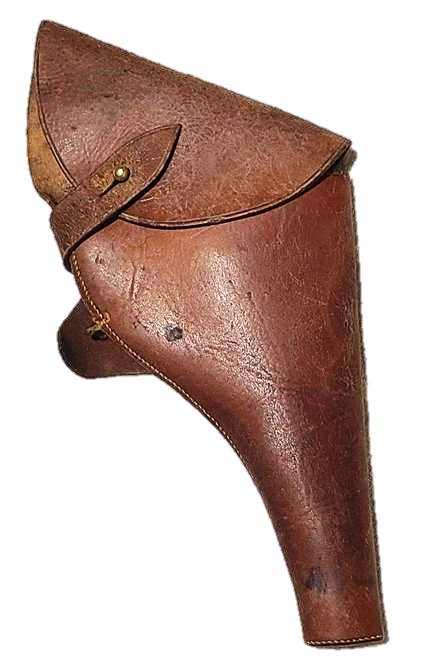
WWI-era Webley revolver holster
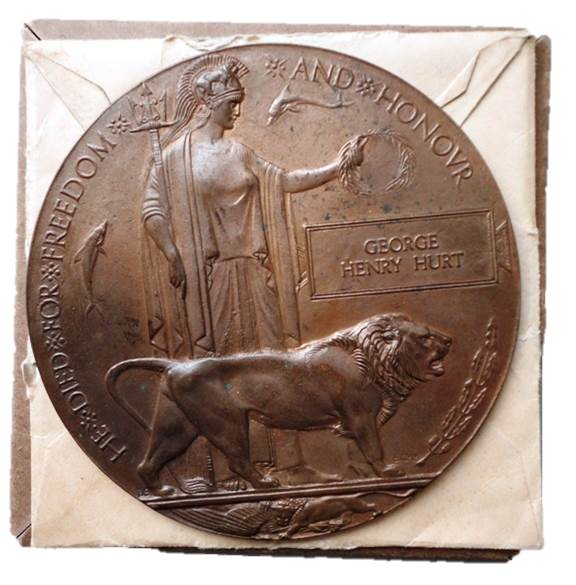
Large bronze memorial plaque given to the families of fallen soldiers. This one is named, but research suggests two casualties with this name gave their lives in the Great War.
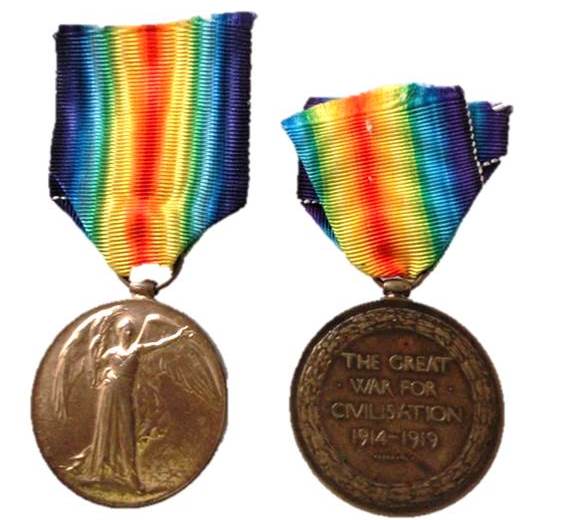
World War I Victory Medals issued to Commonwealth troops. These are named to veterans from the Royal Artillery.
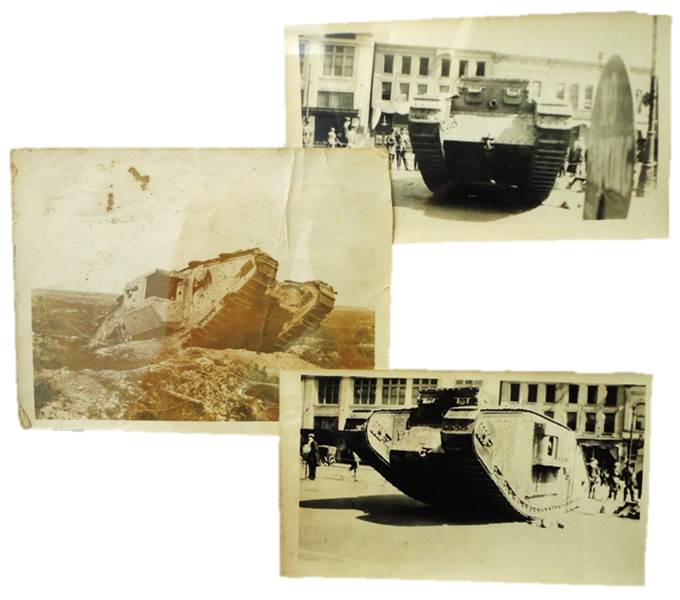
Original photos of British Mark I tanks. These were the first tanks in history to ever to see combat.
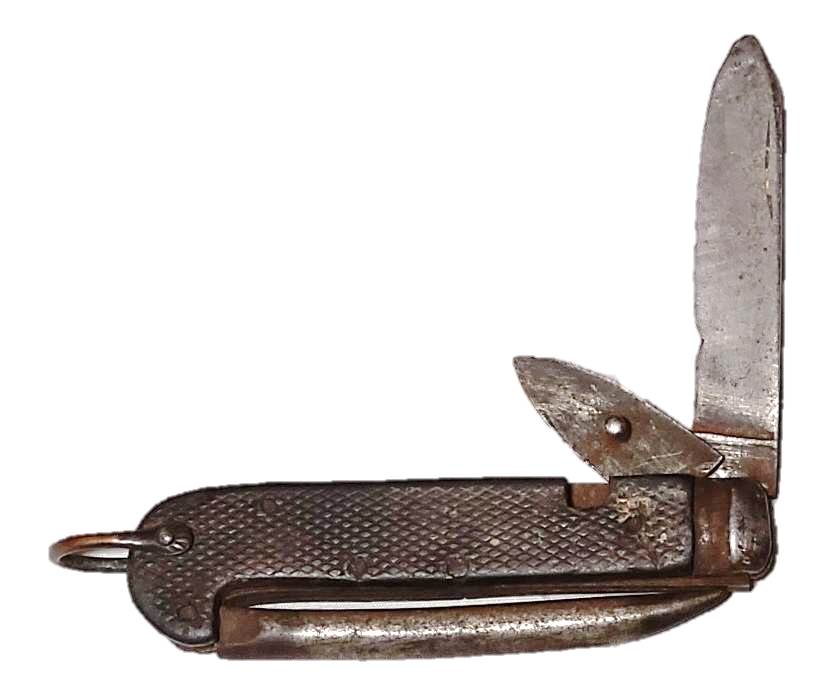
WWI British jack knife
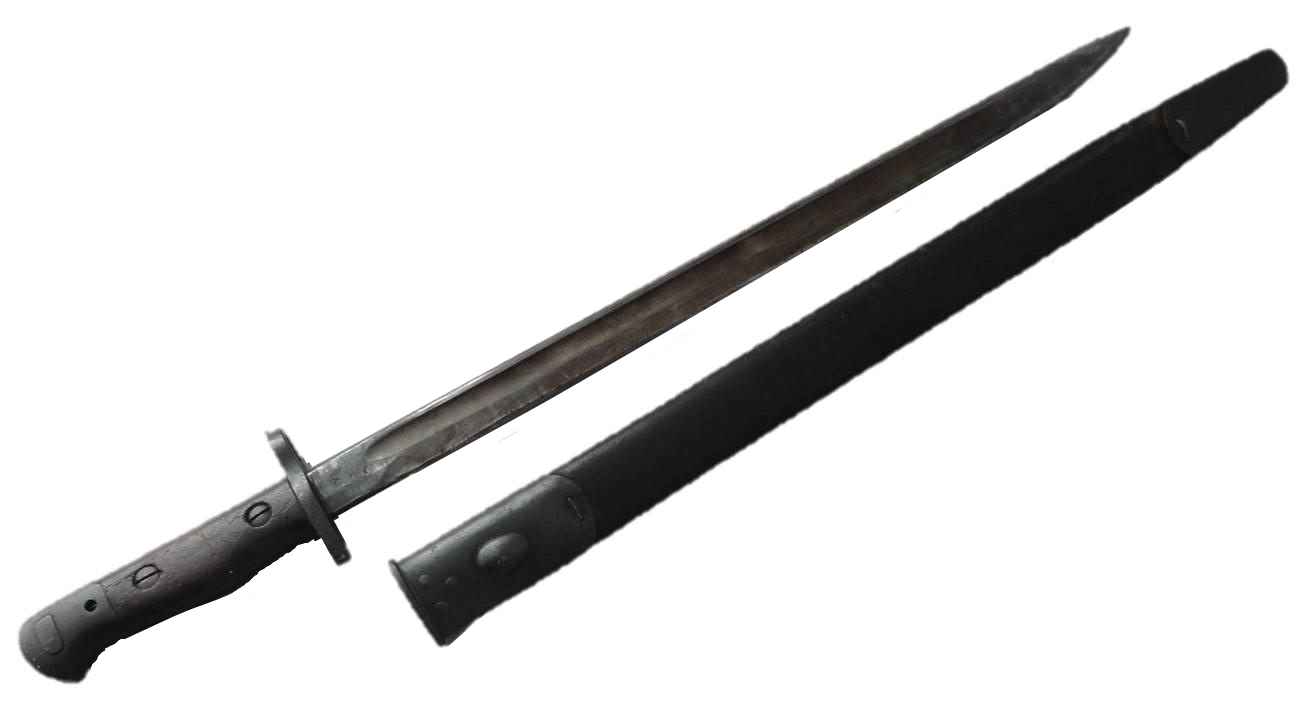
P.07 bayonet for the SMLE .303 rifle.

1917-dated British gas mask and carrier
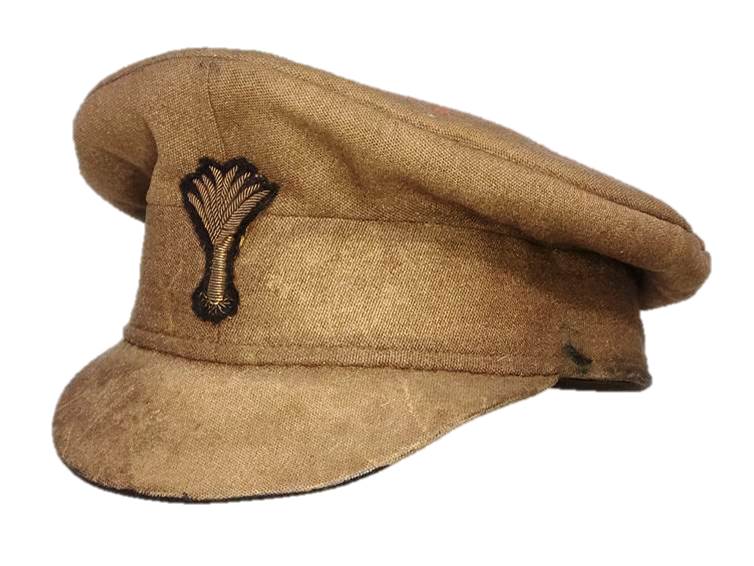
WWI-era trench cap of an officer of the Welsh Guards.
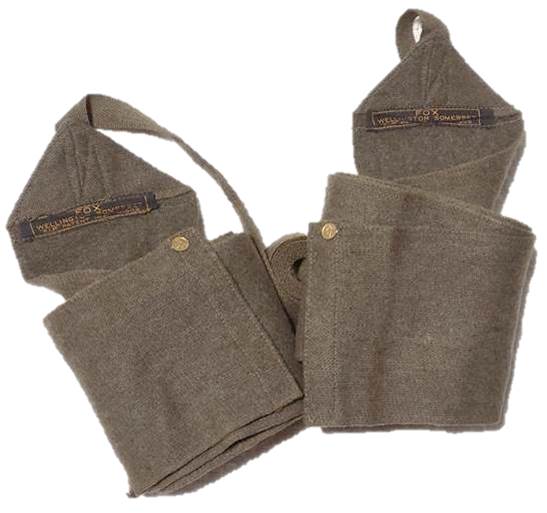
Private-purchase British puttees

Two wartime cook books.
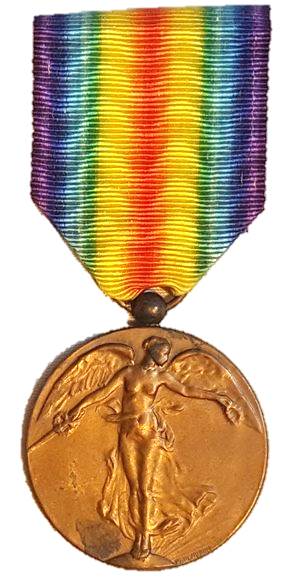
WWI Belgian Victory Medal
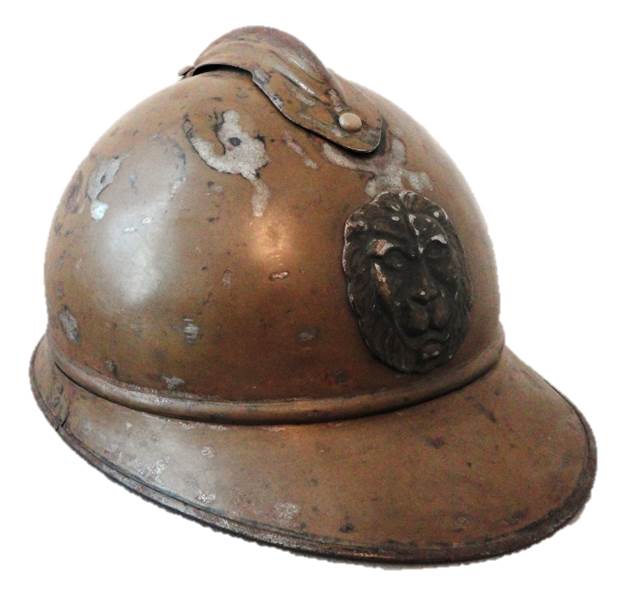
M1915 Belgian Adrian helmet. This was similar to the French design but was painted khaki and featured a lion crest.
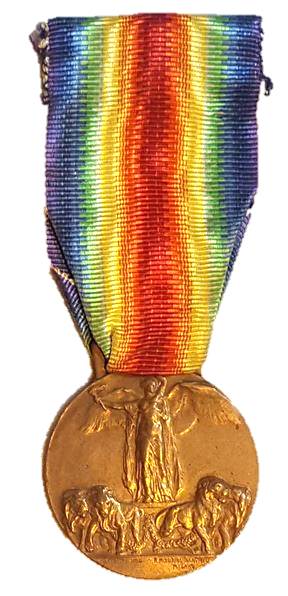
WWI Italian Victory Medal
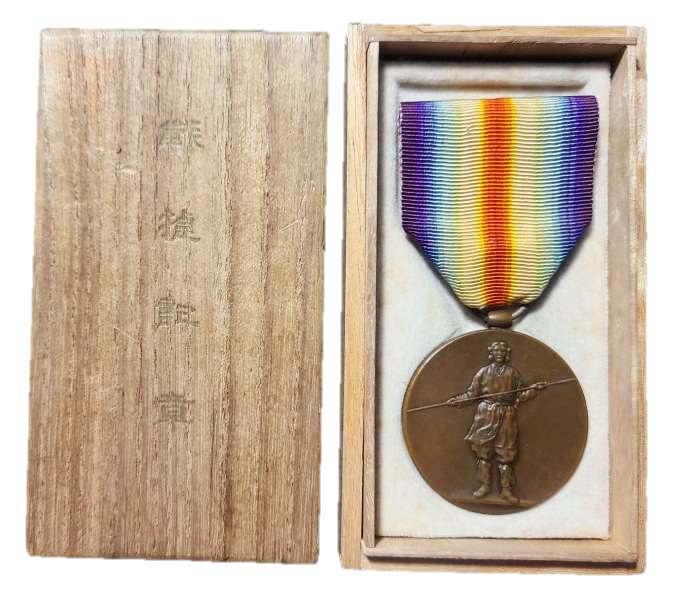
Japan's WWI Victory Medal in box